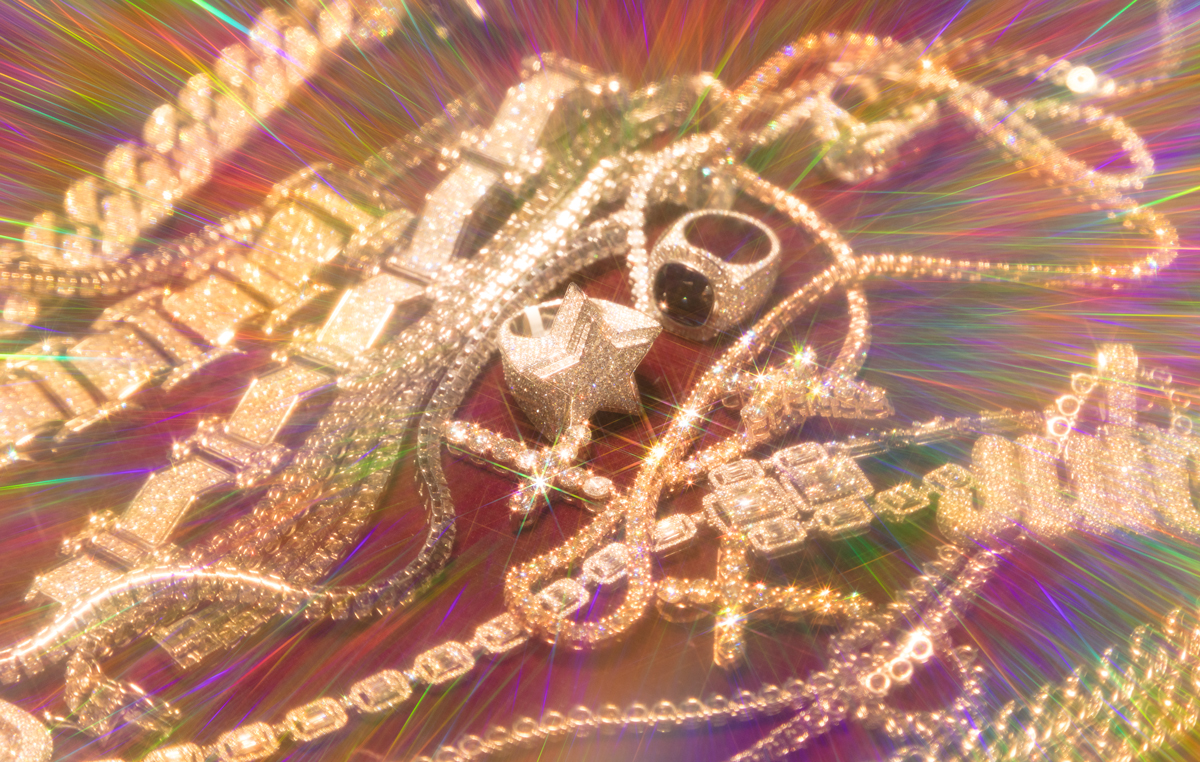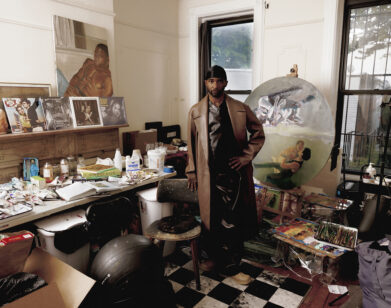Ten Diamond District Denizens Explain Life On the Most ‘New York’ Block in All of New York City

A street is a projection of its inhabitant’s state of mind. It’s like an object sculpted by group think, style, and in the case of West 47th Street, the mannerisms of its degenerate cosmopolitans. The stretch of West 47th between 5th and 6th Avenue, known as the Diamond District, is the premier place in New York City to buy and sell diamonds, get your watch fixed, and partake in many forms of semi-illicit activity. The block itself is a composite of fake teeth, cheap cologne, aviators, dyed hair, machismo, self-loathing, and seemingly uncontrollable gesticulating. It’s an heirloom strain of New York, one that many had thought died off with the opening of a nearby M&M store.
The district functions within a three-tiered hierarchy, where a person’s prestige is measured by their distance away from the action on the street. The lowest level, the hawkers, are groups of mostly immigrant men who hand out pamphlets and sell diamonds wrapped in tissue paper from their pockets. Inside the storefronts are the dealers and families who’ve been on the street for decades and make their profit from repeat customers. Finally, there’s the unattainable private diamond dealers who rake in the majority of the street’s profits and work in retina-scanned skyscrapers that hover above the street.
Architecturally the block is a blend of Beaux-Arts and Art Deco towers that haven’t been cleaned in half a century. The best way to get a feel for the district is to stand on the edge of it and watch the dealers blend into the general population walking the avenues. As tourists marched up 6th Avenue to Rockefeller Center, this past week, I saw one hawker in a camouflage tracksuit and fake Prada sneakers dole out business cards with one hand while juggling a bag of pretzels with the other. Another hawker, in a relatively new camel hair coat, told anybody willing to listen that he used to be the CEO of Wells Fargo.
For years now, people have been announcing the “death” of the District. In fact, the people most eager to tell you that it’s ending are the dealers themselves. “This place is nothing like it used to be. There’s no reason for it to exist,” one disgruntled watch salesman told me. A decade ago the world’s premier jewelry appraisers, the GIA, built their own glass tower (the International Gem Tower) right into the center of West 47th. Although most thought this would signal the end of the district, it only further proved its resolve. Years after the tower’s construction, there are more hawkers in front of this building than any other. There’s even a dollar coffee shop in the lobby to serve the hustler clientele.
The growing use of online marketplaces and digital currencies is also testing the street’s tenacity. Dealers and hawkers, alike, have adopted Instagram and eBay to expand their customer base. As diamond salesman Avi Kaykov told me, “Everybody you see around you has an Instagram page.” Others have begun accepting and trading cryptocurrencies for their wares, a development that shows how any new form can be amalgamated into the street. So what’s life like on New York’s most “New York” city block? We spoke to ten of its denizens to find out.
———
Juan, street hawker
“On the street you’re either fucking people, or getting fucked. It’s like the mafia, or something that people don’t think exists anymore. But it does.”
———
Robert Friedman, diamond salesman
“There are degrees of quality here just like with everything else. There’s a McDonalds hamburger then there’s the PJ Clarke’s hamburger. Or like with art: You don’t go to some mall in the Midwest to buy an Andy Warhol. You go to an art museum. That’s like us. We’re the museum.”
———
Anonymous, street hawker
“All these guys you see holding signs and handing out brochures? They get paid 40 bucks a day. They’re immigrants who don’t know any better and they get drawn into it. The people up in the towers make all the money. We never see them, and we never see the money. I was gonna write a book called ‘The Slaves of 47th Street.’”
———
Anonymous, diamond salesman
“The Diamond District exists to serve joy. What do people need diamonds for? Birthdays. Valentines Day. Any new type of holiday is good business for us. Some people here only do a couple of transactions a year then and live off that. There’s a lot of downtime. That’s where the culture comes from.”
———
Allan Cynamon, watch salesman
“You see those people out there on the street? They’re the worst of New York. 90 percent of the people here are idiots, and the rest are criminals. If you want to write about this place, your article should just be one word: SHIT.”
———
Avi Kaykov, diamond salesman
“Instagram is huge on 47th street. Everybody you see has an Instagram page. Like when Jay-Z or Megyn Kelly want to buy a diamond, they just go on Instagram and find a page they like. Then they go to that store.”
———
Christopher, private security guard
“It’s all about levels here. The hawkers outside bring in clientele for the window retailers. Then, the further you get into the store, the better quality seller you get. Upstairs most dealers have a second office and sweatshop where the diamonds are processed. Then on the top floors of the skyscrapers, you have the private dealers. The further you are from the street, the higher quality your business is. It’s like a vertical assembly line.”
———
Matthew, diamond salesman
“We have our own BID [Business Improvement District] here. It gives us money from the city to help develop the district. And to be honest with you, we actually get a lot more money than say Madison or 5th Avenue’s BID. But you know what they did with the money? They started a free magazine: The Diamond District Monthly. Really? They might as well have bought us fax machines.”
———
Matthew Hitscherich, architect
“My mother is a jeweler. Her father was a jeweler. We (collectively) have been going to the Diamond District since the 1960’s. Like all other good things that remain in New York, the best dealers have simply gone upstairs — to the second floor.”
———
Anonymous, diamond salesman
“Size is everything that’s prized, here. The bigger the store, the better the store. The bigger the diamond, the better the diamond.”






